That would have made the Tenet more expensive to build than rivals - combined with the fact that it was out of character for the company, it would have been a guaranteed loss-maker in the day! Today, however, it would be seen as a curious, intriguing choice for those wanting a modern classic people mover.
Mated to a six-speed manual transmission was another refresh of Rinkai’s classic two-litre SOHC inline-four engine, this time with multi-point fuel injection and a turbocharger for a total output of 158 kW (212 hp). The base RS model’s low weight of 944 kg (2082 lb) gave it a top speed of 241 kph (150 mph) and cornering forces in excess of 0.94 g.
A limited-edition rally version called the RX was produced in 2007, receiving upgrades in the form of an offroad undertray, all-wheel drive with limited-slip differentials, lower fog lights, rally wheels, and lifted suspension. The engine and transmission were carried over from the RS model.
The Hizoku was no grand tourer, but it didn’t aim to be. Although sacrifices were made in terms of comfort, it proved to be a popular little car with an acceptable price tag.
RS
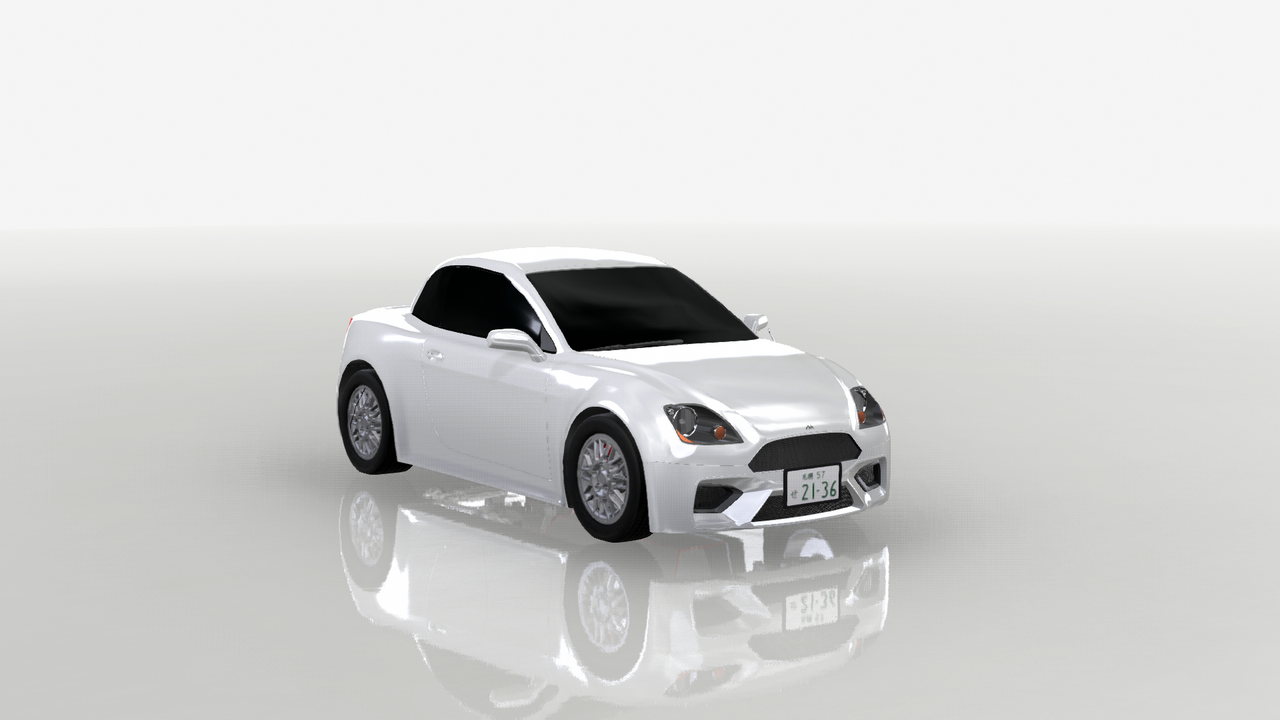
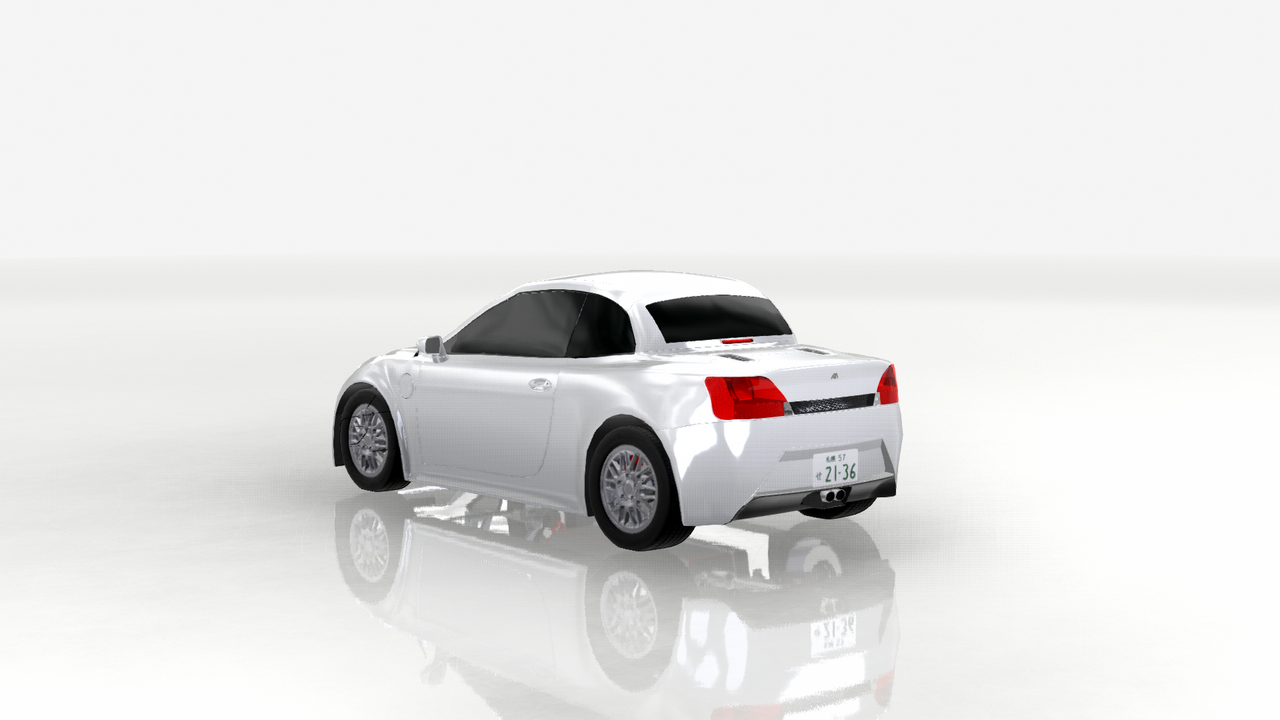
Layout MR
Engine Name RI1-4S
Aspiration TB
Displacement 1999 cc
Peak Power 158 kW (212 hp) @ 6700 RPM
Peak Torque 252 Nm (186 ft-lb) @ 5600 RPM
Weight 944 kg (2082 lb)
Weight Distribution Front/Rear 38/62
STARTING PRICE
¥1,905,000 JDM
$17,750 USDM
COLOURS
Ardour Red
Tangerine
Legacy Sunset Orange
Candy Burnt Orange
Hornet Yellow
Vivid Green
Kuromatsu
Electric Blue
Pacific Blue
Legacy Coastal Blue
Sandy Khaki
Ethereal White
Steel Grey
Sumi Black
RX

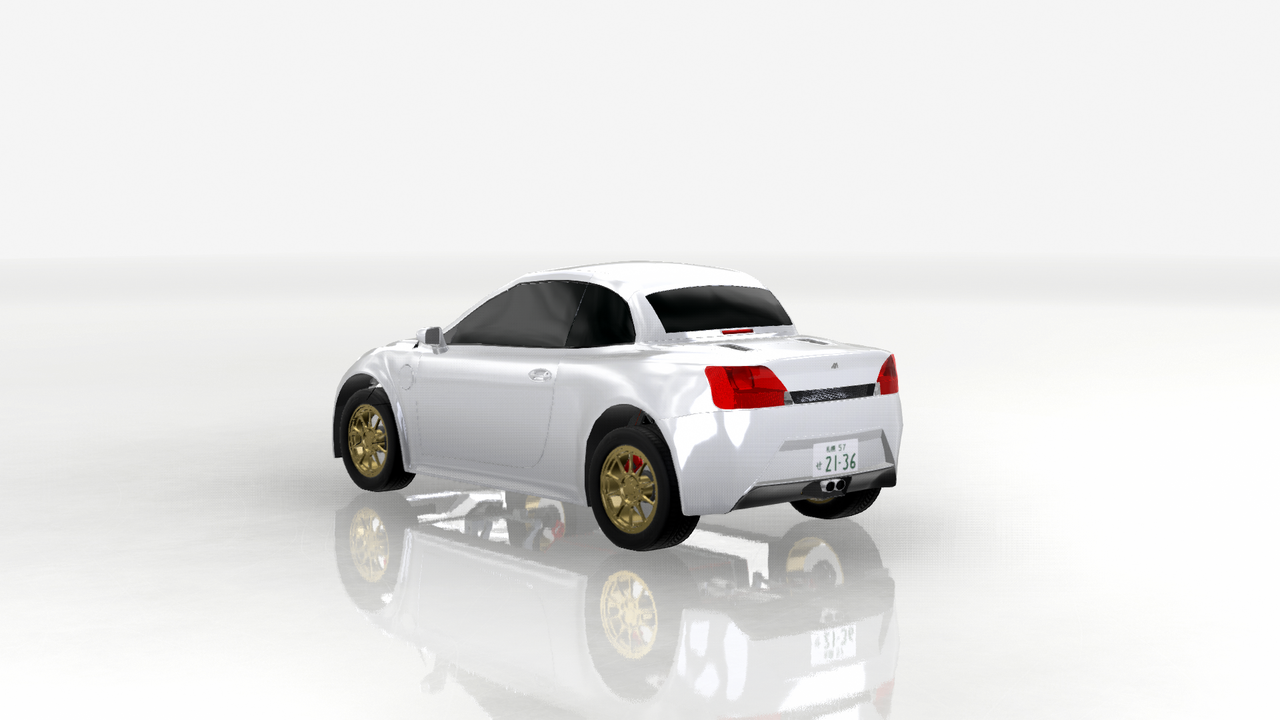
Layout MR
Engine Name RI1-4S
Aspiration TB
Displacement 1999 cc
Peak Power 158 kW (212 hp) @ 6700 RPM
Peak Torque 252 Nm (186 ft-lb) @ 5600 RPM
Weight 1009 kg (2224 lb)
Weight Distribution Front/Rear 39/61
STARTING PRICE
¥2,225,000 JDM
$21,000 USDM
COLOURS
Ardour Red
Tangerine
Legacy Sunset Orange
Candy Burnt Orange
Hornet Yellow
Vivid Green
Kuromatsu
Electric Blue
Pacific Blue
Legacy Coastal Blue
Sandy Khaki
Ethereal White
Steel Grey
Sumi Black
While its road-going RS counterpart was built with driving pleasure in mind, the Hizoku TC was a machine focused on numbers, and as such, it was definitely not for the faint of heart.
TC


Layout MR
Engine Name RI1-4S
Aspiration TB
Displacement 1999 cc
Peak Power 340 kW (456 hp) @ 7600 RPM
Peak Torque 456 Nm (337 ft-lb) @ 6600 RPM
Weight 896 kg (1975 lb)
Weight Distribution Front/Rear 36/64
STARTING PRICE
N/A (development and production cost approx. ¥79,331,683/unit)
COLOURS
Electric Blue/Ethereal White
The design of Mizuiro’s two-litre inline-four, dating back to 1974, was given a modern-day refresh and built from the ground up with an aluminum-alloy block and head as well as a DOHC valvetrain. Combined with an electric motor, the resulting hybrid powerplant was capable of 83 kW (111 hp) and 21 km/L (49 mpg US).
The Kasui, being a hybrid geared towards everyday use, was styled in a simple manner, with a faux lower grille to preserve aerodynamics, as well as an inconspicuous exhaust disguised as a vent on the bottom edge of the rear bumper. It was a premium car, with LED units in the headlights and taillights and electric power steering, among other amenities. The Kasui effectively projected an eco-friendly image through its understated appearance, but the way it handled—especially in spite of its relative lack of power—demonstrated that Mizuiro hadn’t lost its touch when it came to green cars.
Kasui

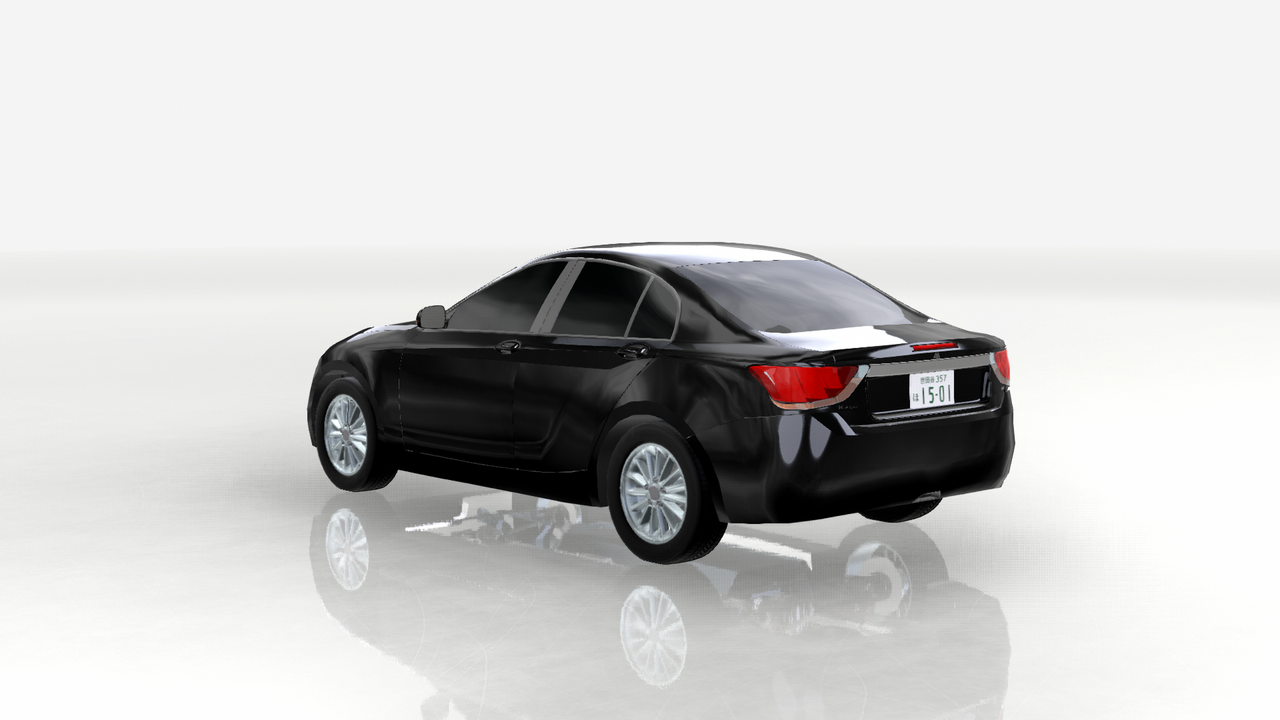
Layout F4
Engine Name MI1-4D
Aspiration TB
Displacement 1999 cc
Peak Power 83 kW (111 hp) @ 5200 RPM
Peak Torque 225 Nm (166 ft-lb) @ 2100 RPM
Weight 1323 kg (2917 lb)
Weight Distribution Front/Rear 55/45
STARTING PRICE
¥2,735,000 JDM
$25,250 USDM
COLOURS
Ardour Red
Deep Velour
Light Steel Blue
Serene Blue Metallic
Pacific Blue
Steel Blue
Sandy Khaki
Steel Gold
Katsuobushi
Ethereal White
Cloud Grey Metallic
Tungsten Grey
Pewter Grey
Black Mist Metallic
The Kasui’s hybrid system was removed and the engine was modified to make 137 kW (183 hp) over the standard car’s 83 kW (111 hp). Connected to the engine was a six-speed sequential transmission that replaced the six-speed automatic, routing power to the rear wheels through a limited-slip differential. New wheels, brakes, and shock absorbers were installed, the interior was stripped, and an undertray was added to improve aerodynamics. The car’s weight was brought down to 1030 kg (2271 lb), completing the package.
These rare, specialized cars were only sold in Japan by Mizuiro, as Splash had the company’s full support.
Kasui

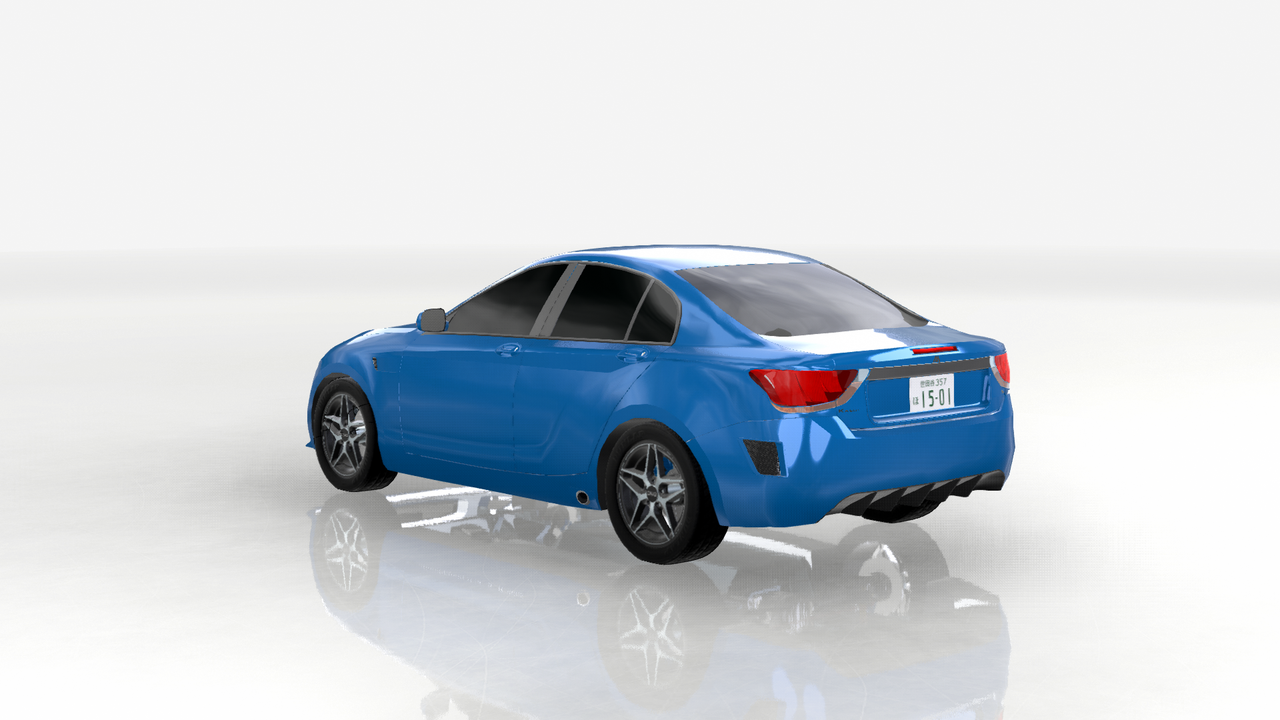
Layout FR
Engine Name MI1-4D
Aspiration NA
Displacement 1999 cc
Peak Power 137 kW (183 hp) @ 7200 RPM
Peak Torque 200 Nm (148 ft-lb) @5000 RPM
Weight 1030 kg (2271 lb)
Weight Distribution Front/Rear 53/47
STARTING PRICE
¥4,820,000 JDM
COLOURS
Ardour Red
Tangerine
Legacy Sunset Orange
Serene Blue Metallic
Pacific Blue
Steel Blue
Steel Gold
Katsuobushi
Ethereal White
Cloud Grey Metallic
Pewter Grey
Black Mist Metallic
Sumi Black
The Karai was instantly recognizable thanks in no small part to its swooping, rounded-off body and small, efficient LED headlights. It also differed significantly from other kei cars in that it had a kei-sized flat-4 engine as opposed to the de facto standard inline-3. Power from said engine was also transferred to the rear wheels to help harness its limited maximum output.
The Karai, as Mizuiro’s new flagship kei car, sported a unique badge in the shape of a flower bud. While it did not have as much cargo space as its competitors due to the unusual body shape, they were in turn somewhat over-optimized for practicality and lacked the finesse of the Karai, which served as Mizuiro’s return to form.
Karai

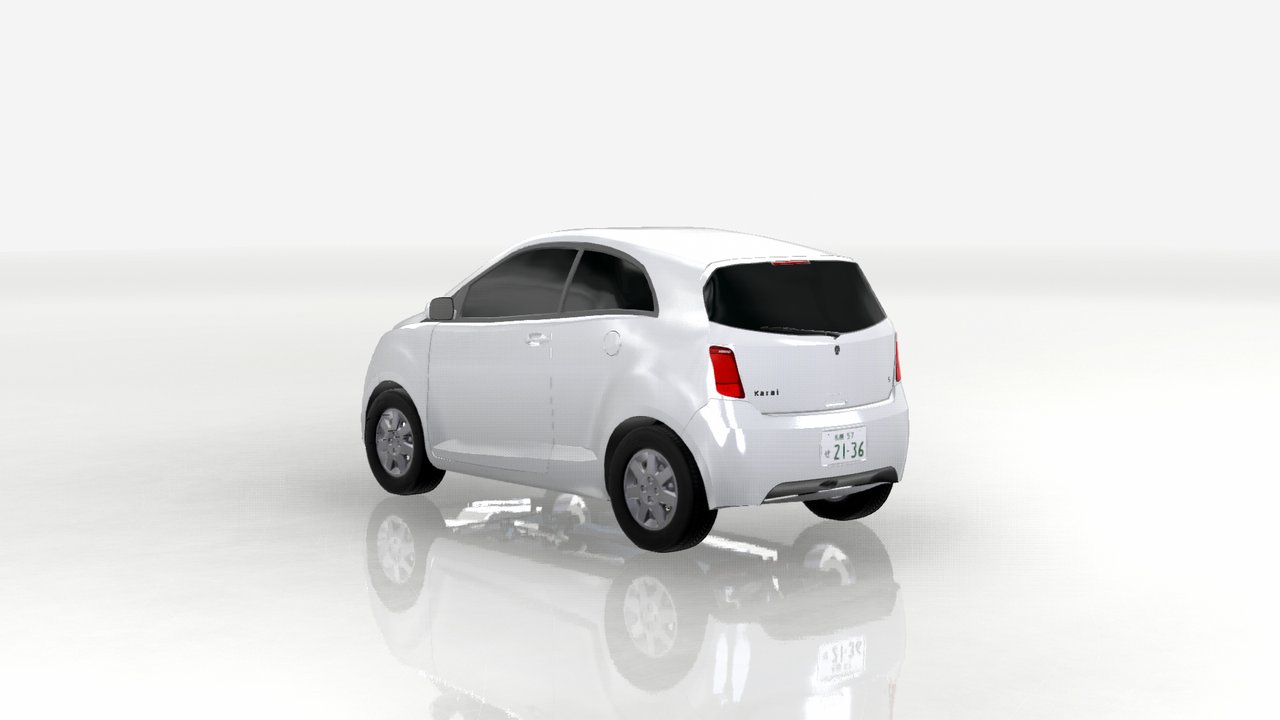
Layout FR
Engine Name MBK1-4D
Aspiration TB
Displacement 660 cc
Peak Power 47 kW (63 hp) @ 6300 RPM
Peak Torque 77 Nm (57 ft-lb) @ 5300 RPM
Weight 900 kg (1983 lb)
Weight Distribution Front/Rear 54/45
STARTING PRICE
¥800,000 JDM
COLOURS
Ardour Red
Tangerine
Hornet Yellow
Vivid Green
Electric Blue
Pacific Blue
Sandy Khaki
Steel Gold
Katsuobushi
Ethereal White
Sumi Black
The most unique feature of the Inuwashi was its engine; sourced from the company’s Washiza (鷲座; Aquila) superbike, the punchy 1.3-litre naturally-aspirated inline-four revved quickly, propelling the sub-1,000 kg (2205 lb) car to 100 kph (62 mph) in six seconds. Connected to the engine was a six-speed sequential transmission similar to that on the Washiza, but overhauled for automotive use.
With an aluminum frame and aluminum bodywork, the Inuwashi possessed incredible agility and lacked sway bars due to its incredibly low weight. Its handling performance was impressive on its own, but the power provided by its engine made it into a true bird of prey among sportscars.
Inuwashi
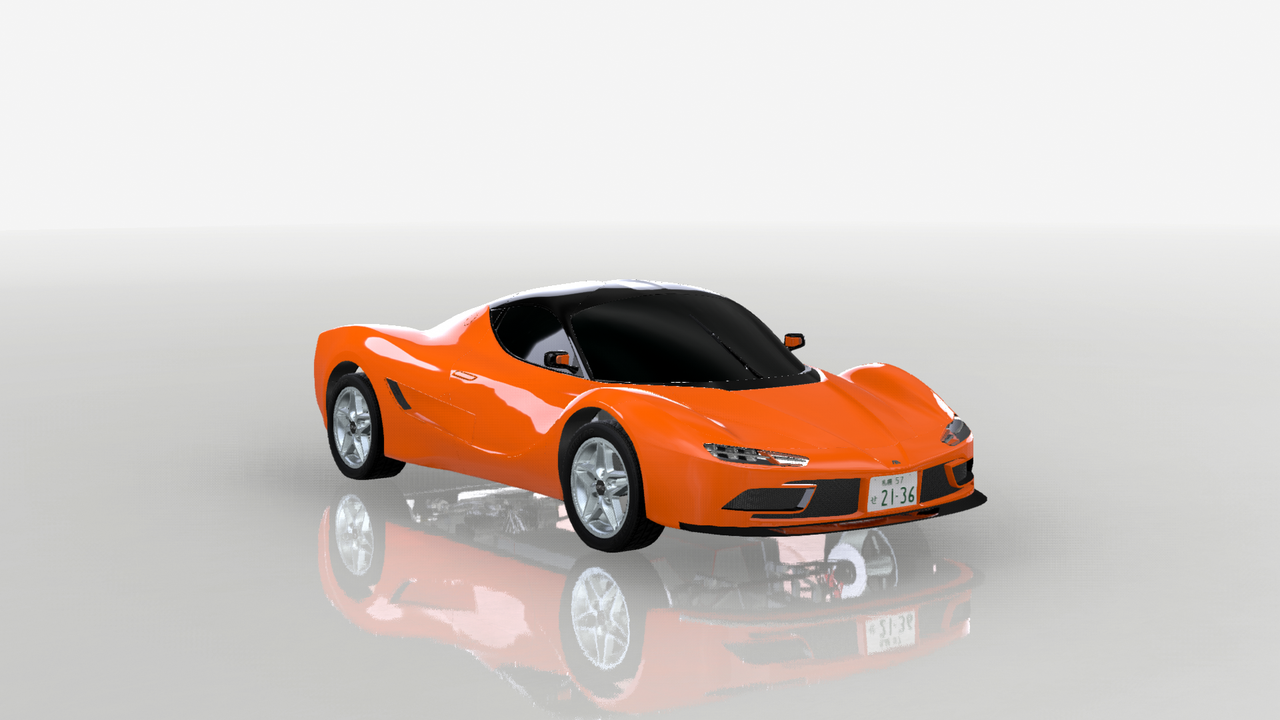
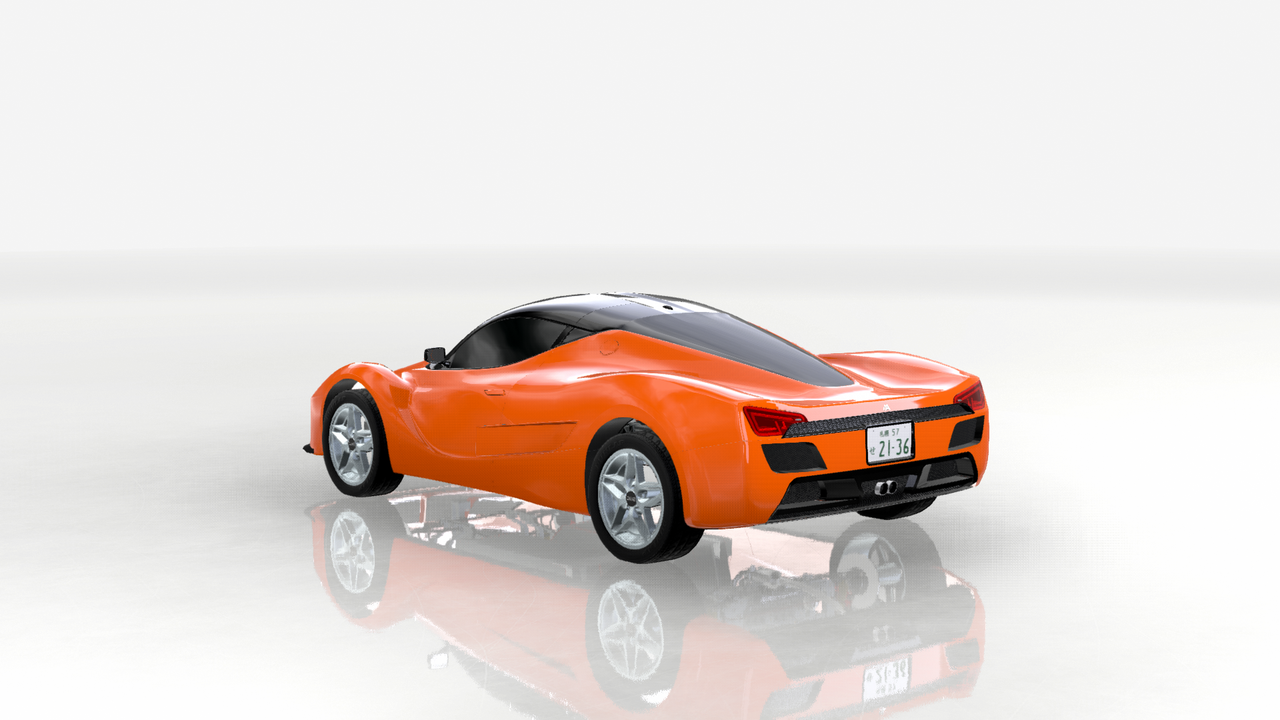
Layout MR
Engine Name ---
Aspiration NA
Displacement 1340 cc
Peak Power 118 kW (158 hp) @ 8900 RPM
Peak Torque 137 Nm (101 ft-lb) @ 7500 RPM
Weight 970 kg (2138 lb)
Weight Distribution Front/Rear 46/54
STARTING PRICE
¥3,296,000 JDM
$30,000 USDM
COLOURS
Ardour Red
Tangerine
Legacy Sunset Orange
Candy Burnt Orange
Hornet Yellow
Vivid Green
Kuromatsu
Electric Blue
Serene Blue Metallic
Pacific Blue
Steel Gold
Ethereal White
Steel Grey
Sumi Black
While the 660 cc flat-four engine used in the Karai was novel and helped lower the car’s centre of gravity, a three-cylinder of comparable displacement would ultimately be less complex, more reliable, and capable of a higher torque output. The Kaizoe’s inline-three, in particular, made 89 Nm (66 ft-lb) of torque over the 77 Nm (57 ft-lb) of the Karai’s flat-four, supplementing the maximum of 47 kW (63 hp) allotted to kei cars and allowing for a lower redline. Once again, the standard model (designated “T” for “turbocharged”) was offered alongside the S model, which lost 49 kg (108 lb) of weight and came with alloy wheels and a stiffer suspension tune.
While the more agile Karai was somewhat lacking in practicality, the Kaizoe easily solved such issues while retaining the charm of its predecessor.
T
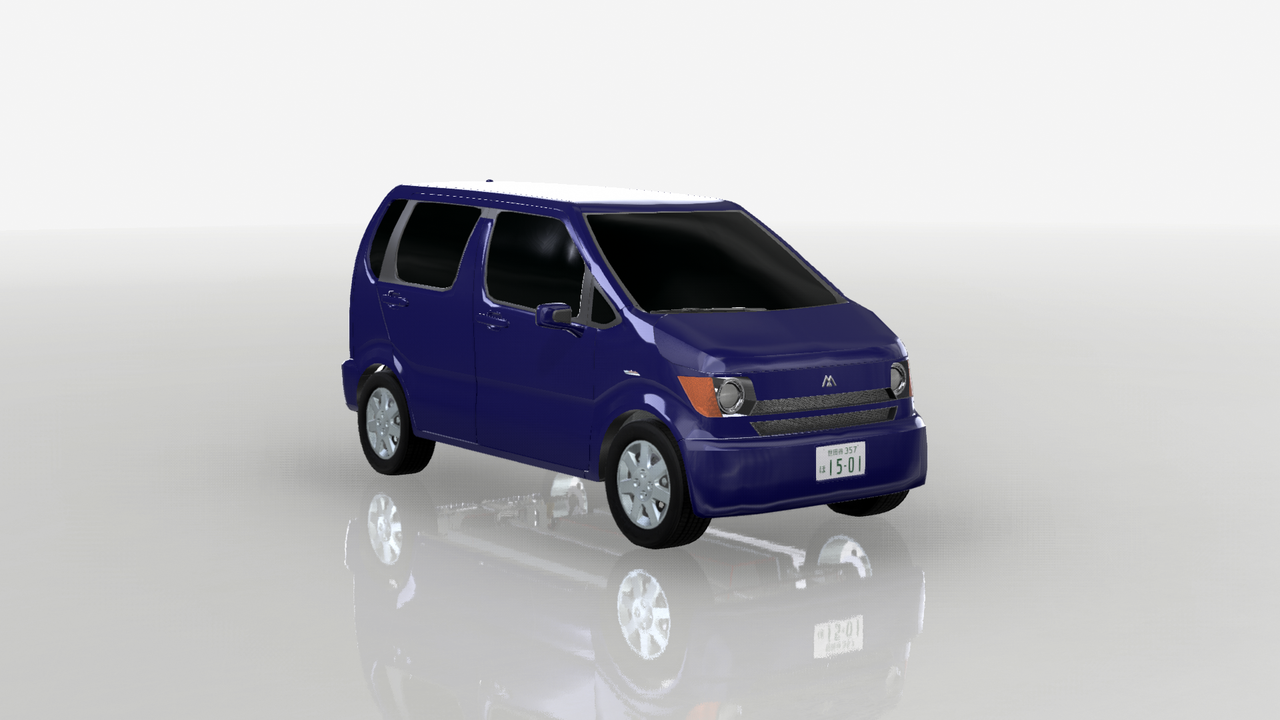
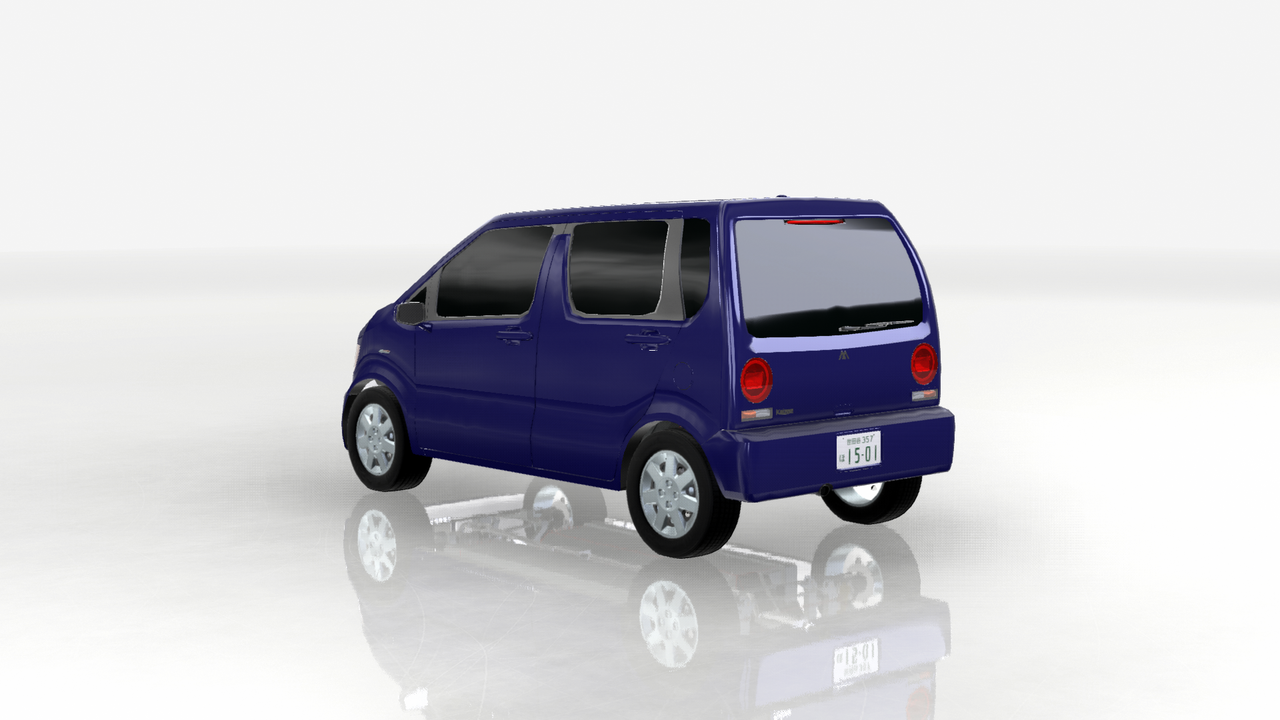
Layout FF
Engine Name MIK2-3D
Aspiration TB
Displacement 659 cc
Peak Power 47 kW (63 hp) @ 6500 RPM
Peak Torque 89 Nm (66 ft-lb) @ 3300 RPM
Weight 1098 kg (2421 lb)
Weight Distribution Front/Rear 56/44
STARTING PRICE
¥1,070,000 JDM
COLOURS
Ardour Red
Tangerine
Hornet Yellow
Vivid Green
Electric Blue
Legacy Coastal Blue
Sandy Khaki
Katsuobushi
Ethereal White
Legacy Snow Grey
Sumi Black
S
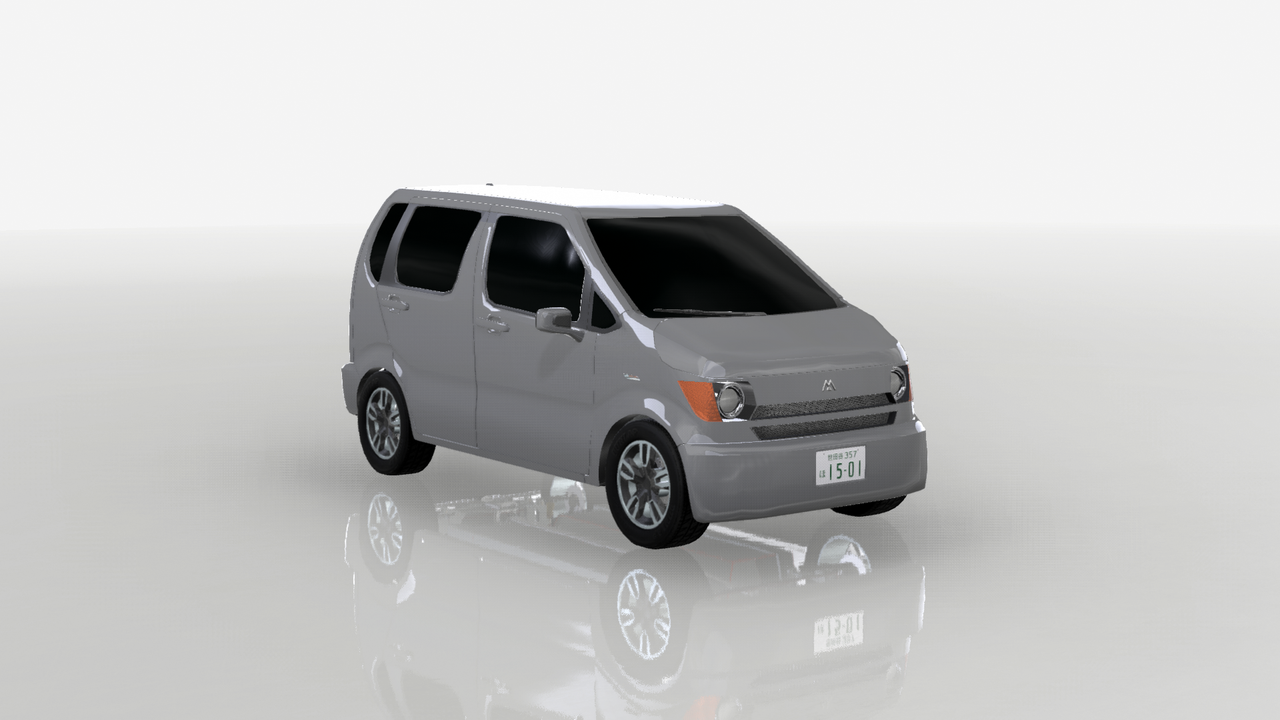

Layout FF
Engine Name MIK2-3D
Aspiration TB
Displacement 659 cc
Peak Power 47 kW (63 hp) @ 6500 RPM
Peak Torque 89 Nm (66 ft-lb) @ 3300 RPM
Weight 1049 kg (2313 lb)
Weight Distribution Front/Rear 56/44
STARTING PRICE
¥1,230,000 JDM
COLOURS
Ardour Red
Tangerine
Hornet Yellow
Vivid Green
Electric Blue
Legacy Coastal Blue
Sandy Khaki
Katsuobushi
Ethereal White
Legacy Snow Grey
Sumi Black
engineering wise it’s very good, but the design lacks a lot
Due to the car’s stature, a flat-4 engine layout and offroad undertray were used to more effectively lower the centre of gravity. With a displacement of 2.5 litres and natural aspiration, it provided decent power quickly, crucial for tackling steep grades.
Alongside the standard N model was the X model, with upgraded suspension, a bull bar, and a more powerful engine as standard features. The N lent itself well to both off-road and on-road conditions, but the X was a thoroughbred adventurer that punched above its weight when taken off the beaten path.
N
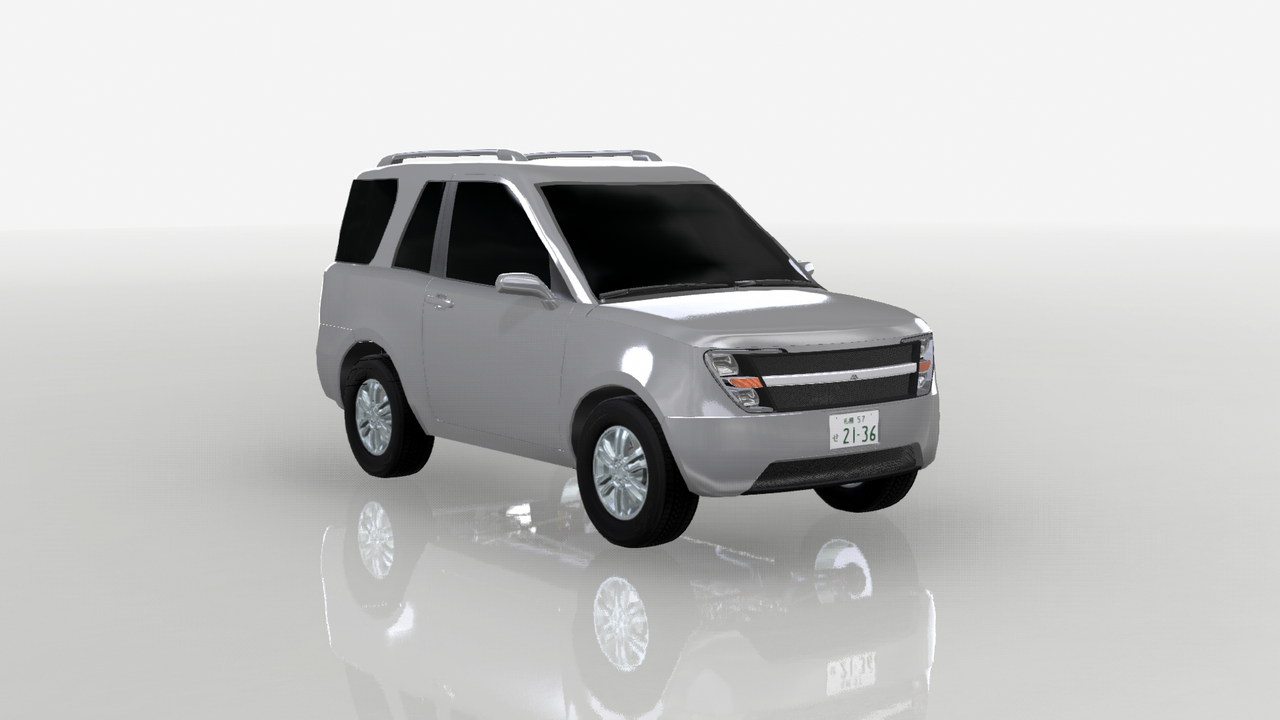
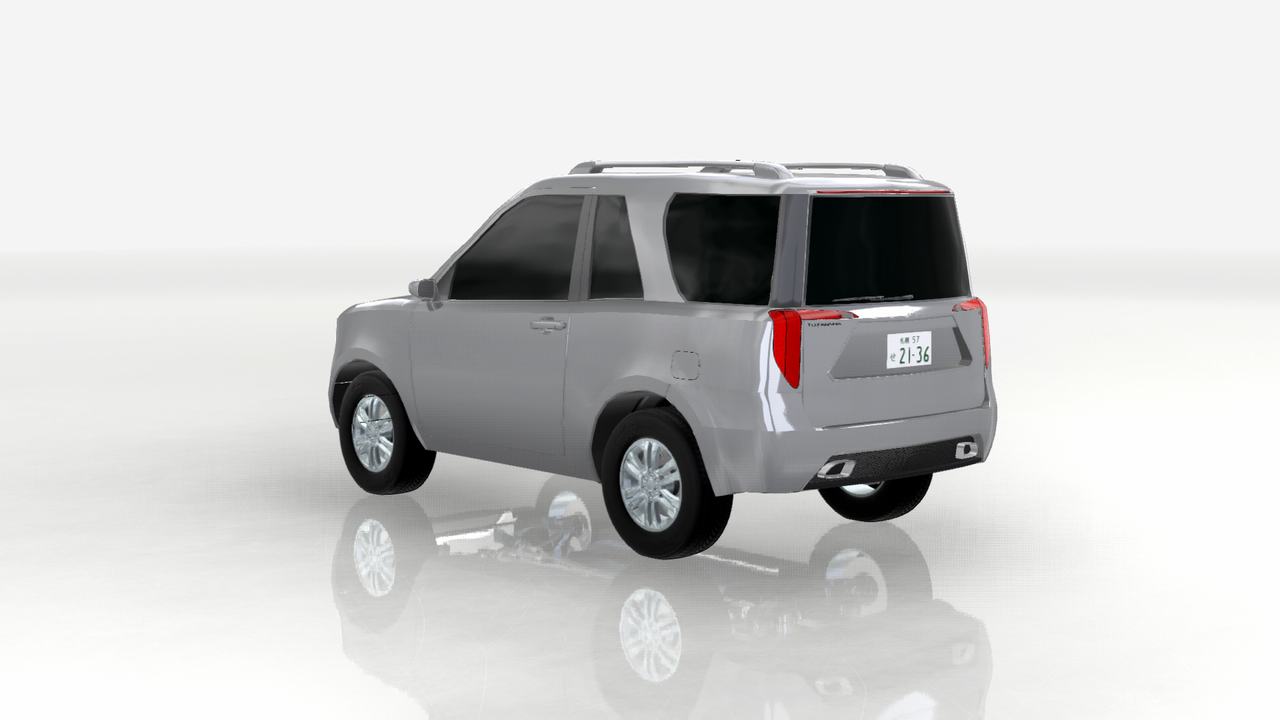
Layout F4
Engine Name MB2-4D
Aspiration NA
Displacement 2497 cc
Peak Power 99 kW (133 hp) @ 5500 RPM
Peak Torque 215 Nm (159 ft-lb) @ 3600 RPM
Weight 1201 kg (2648 lb)
Weight Distribution Front/Rear 54/46
STARTING PRICE
¥3,450,400 JDM
$32,200 USDM
COLOURS
Ardour Red
Serene Blue Metallic
Pacific Blue
Steel Blue
Sandy Khaki
Steel Gold
Katsuobushi
Ethereal White
Cloud Grey Metallic
Tungsten Grey
Sumi Black
X
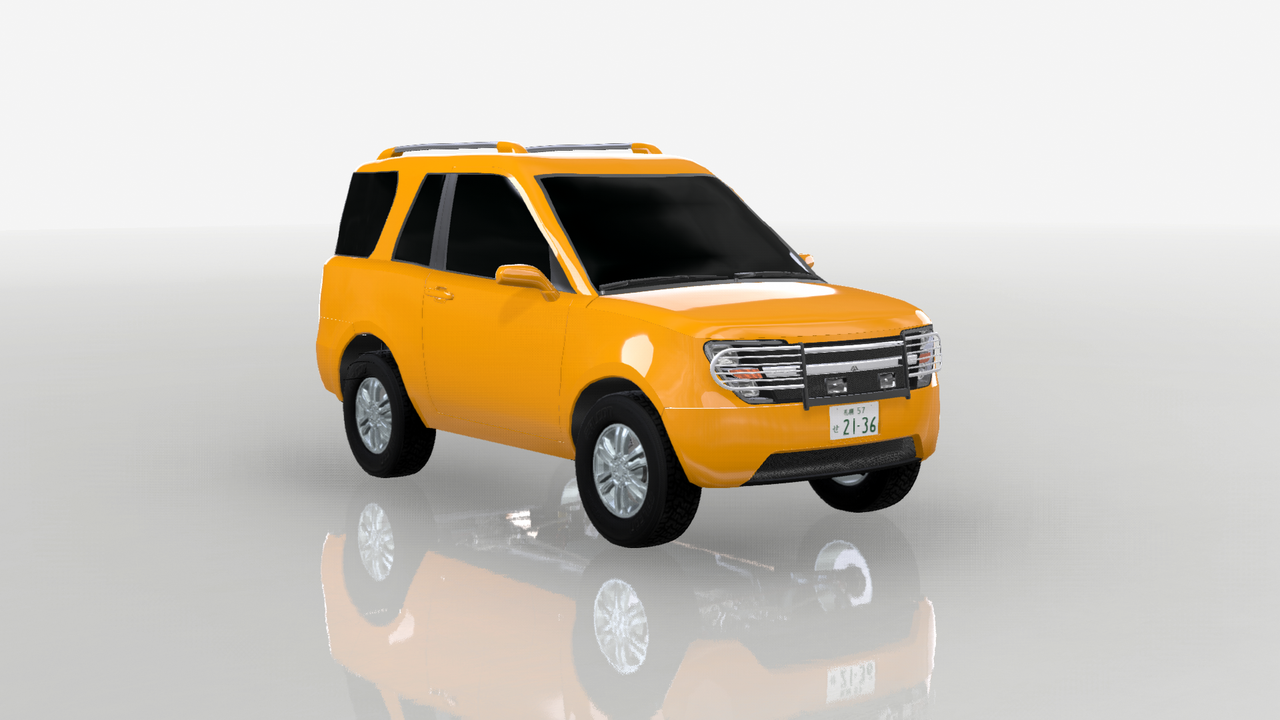
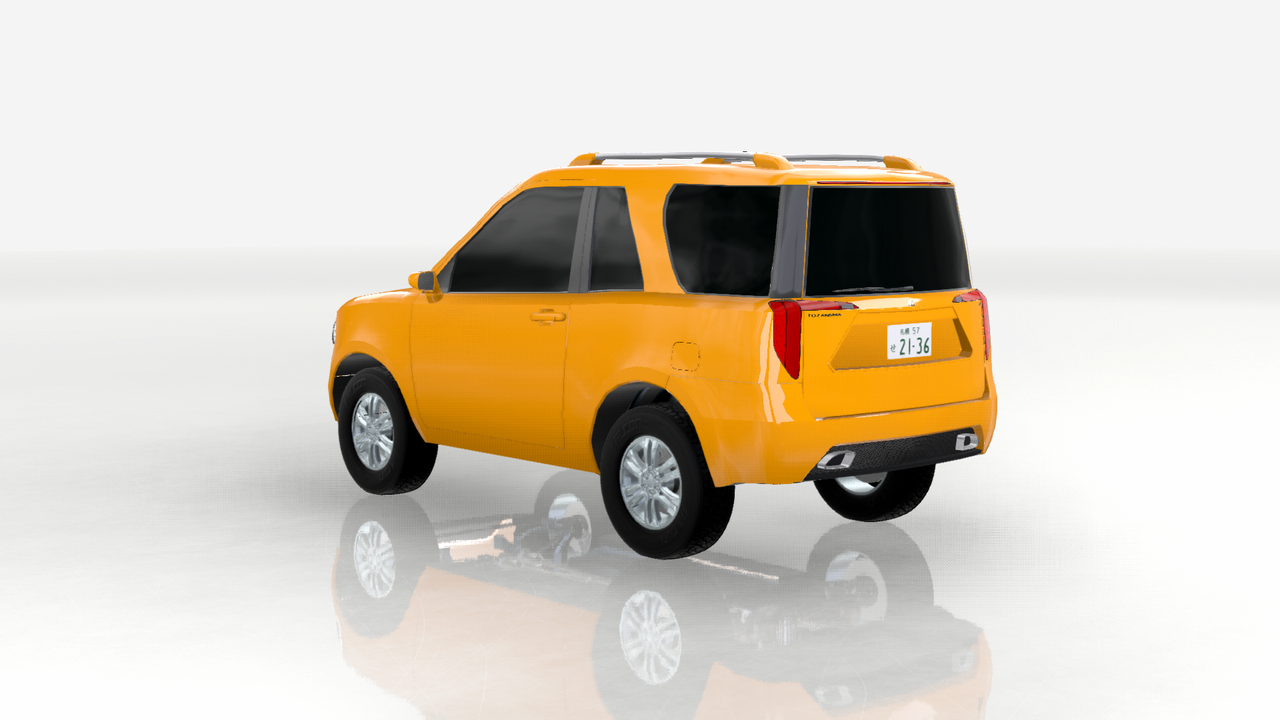
Layout F4
Engine Name MB2-4D
Aspiration NA
Displacement 2497 cc
Peak Power 138 kW (184 hp) @ 6400 RPM
Peak Torque 246 Nm (181 ft-lb) @ 3600 RPM
Weight 1222 kg (2694 lb)
Weight Distribution Front/Rear 53/47
STARTING PRICE
¥5,070,150 JDM
$47,350 USDM
COLOURS
Ardour Red
Hornet Yellow
Electric Blue
Serene Blue Metallic
Pacific Blue
Steel Blue
Sandy Khaki
Steel Gold
Katsuobushi
Ethereal White
Cloud Grey Metallic
Tungsten Grey
Sumi Black
Behind the driver’s seat sat the same 2.5-litre SOHC V8 used in the Mont Blanc, having had everything except the engine block either upgraded or replaced with race-ready components that included DCOE carburetors and a racing exhaust system. It produced 165 kW (221 hp) of power—a figure that ultimately contributed to a top speed of 294 kph (183 mph) and a 0-100 time of 5.34 seconds.
While some design elements were carried over, the somewhat dated body shape was ultimately scrapped in favour of a more angular design for Shimizu’s first road-going midship sports car: the Gran Paradiso.
GP70
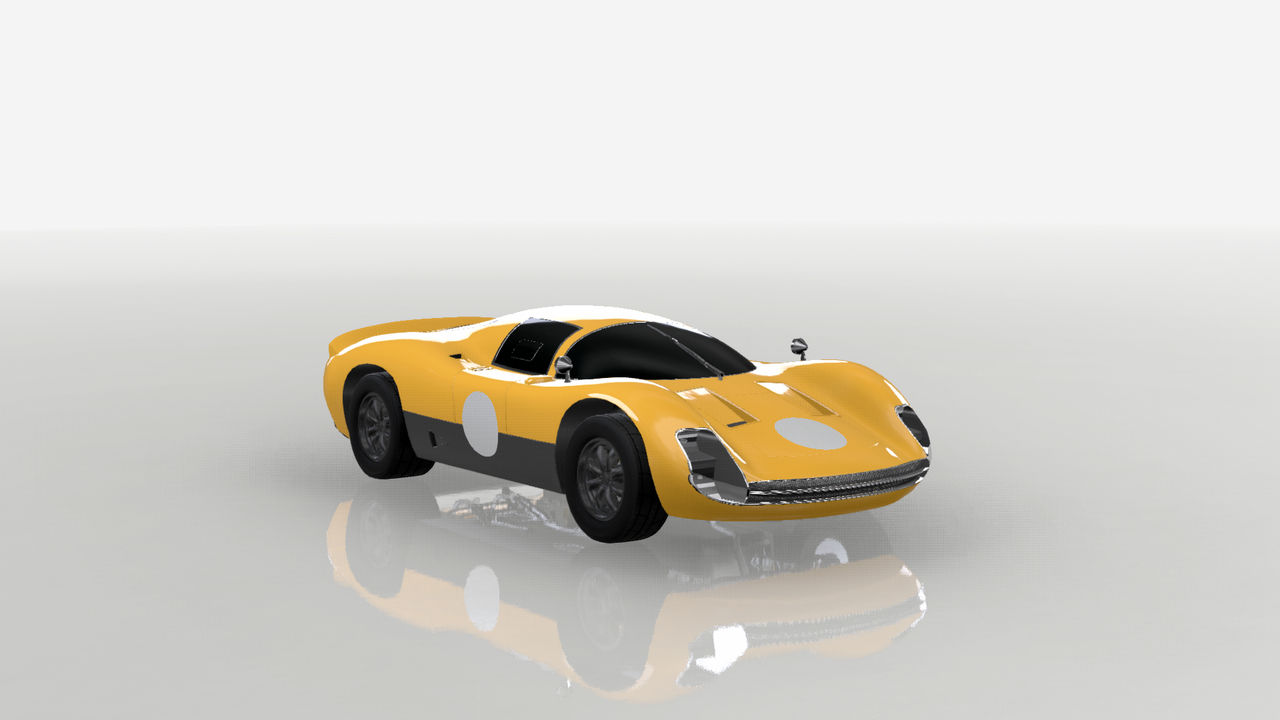
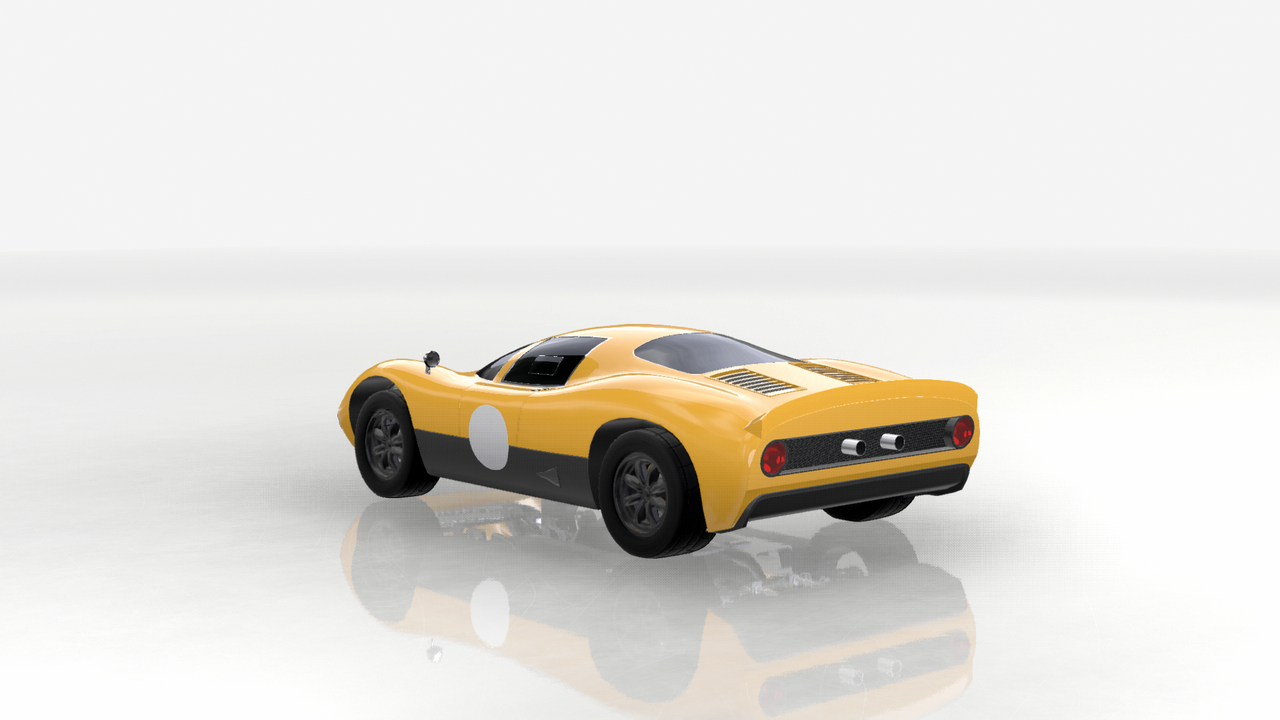
Layout MR
Engine Name S-25R
Aspiration NA
Displacement 2496 cc
Peak Power 165 kW (221 hp) @ 7100 RPM
Peak Torque 252 Nm (186 ft-lb) @ 5700 RPM
Weight 848 kg (1870 lb)
Weight Distribution Front/Rear 36/64
STARTING PRICE
N/A (development and production cost approx. ¥619,488/unit)
COLOURS
Yellow
A more track-oriented version was also available. Called the Aspect R, it shed 88 kg (194 lb) and boasted a power output of 239 kW (321 hp), making it Mizuiro’s most powerful mass-produced car yet and resulting in a 0-100 time of 4.2 seconds. It was also appropriately equipped, with a rear wing, rain light, magnesium wheels, and most importantly, a more planted suspension setup for tackling corners head-on.
S
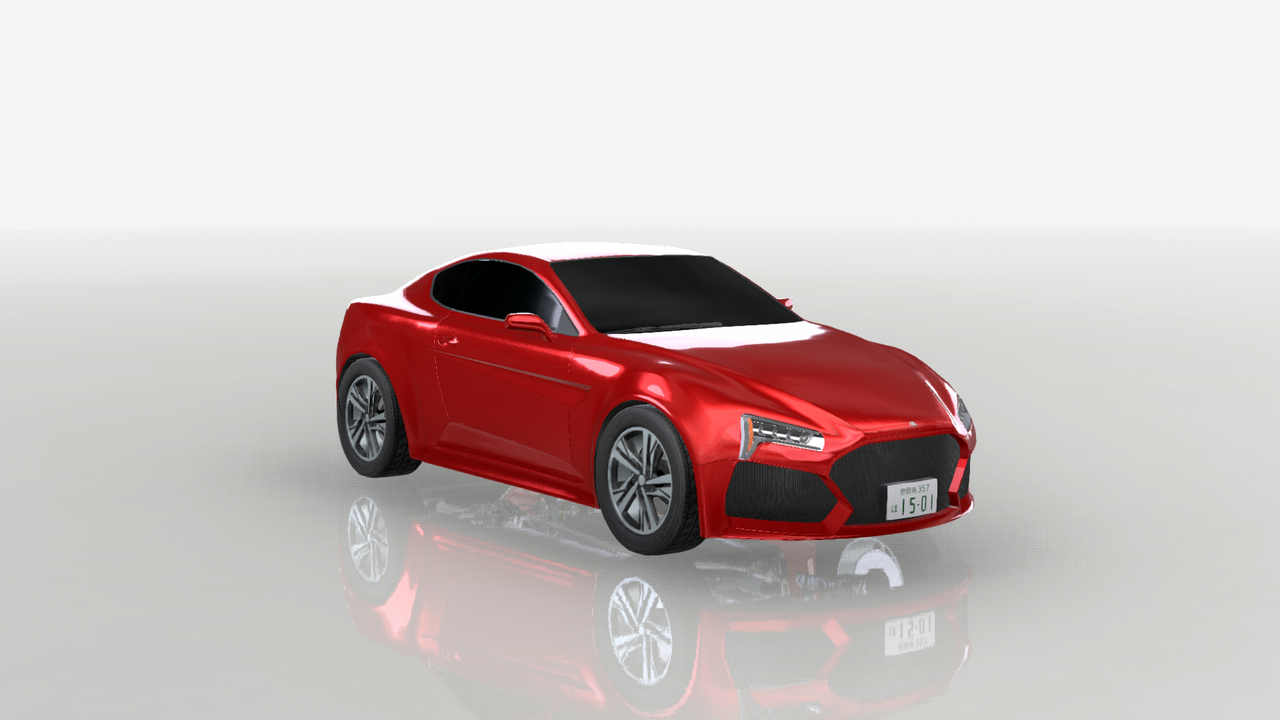
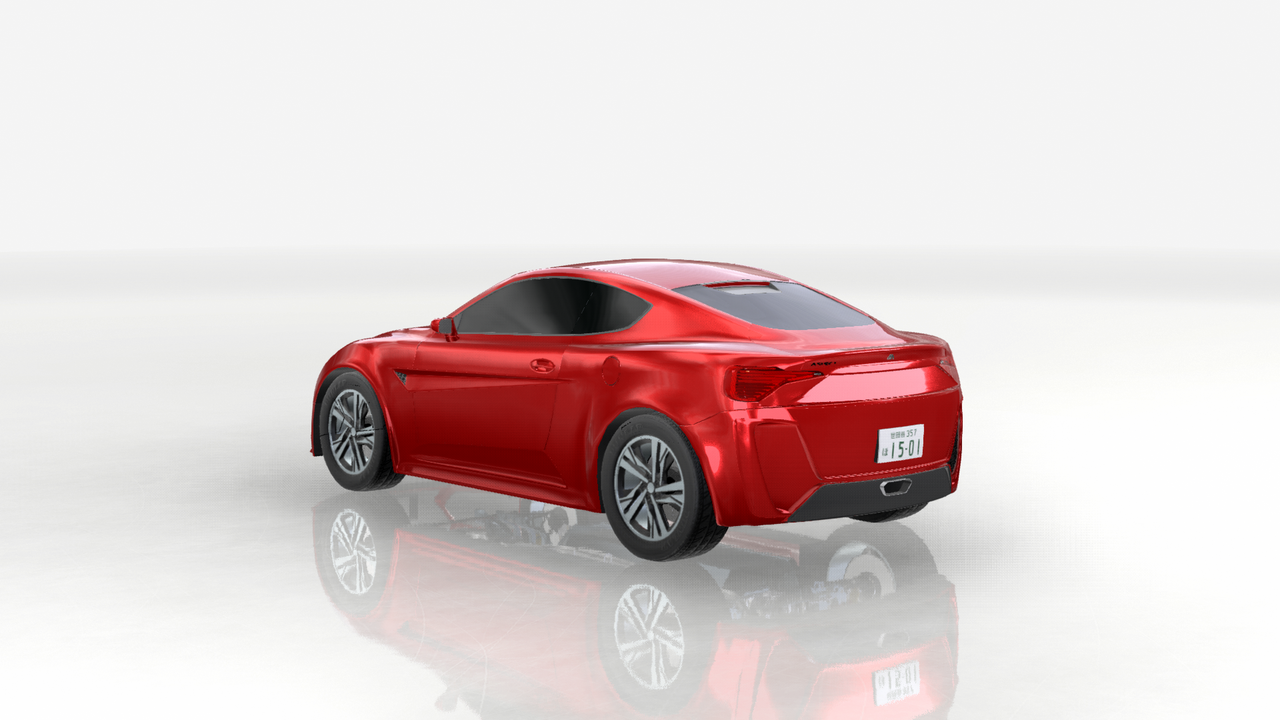
Layout FR
Engine Name MI1-4D
Aspiration TB
Displacement 1997 cc
Peak Power 192 kW (258 hp) @ 7700 RPM
Peak Torque 260 Nm (191 ft-lb) @ 4700 RPM
Weight 1233 kg (2718 lb)
Weight Distribution Front/Rear 56/44
STARTING PRICE
¥3,740,000 JDM
$35,100 USDM
COLOURS
Blazing Red Metallic
Ardour Red
Tangerine
Legacy Sunset Orange
Candy Burnt Orange
Biwa Blue Metallic
Legacy Coastal Blue
Ethereal White
Cloud Grey Metallic
Pewter Grey
Sumi Black
R
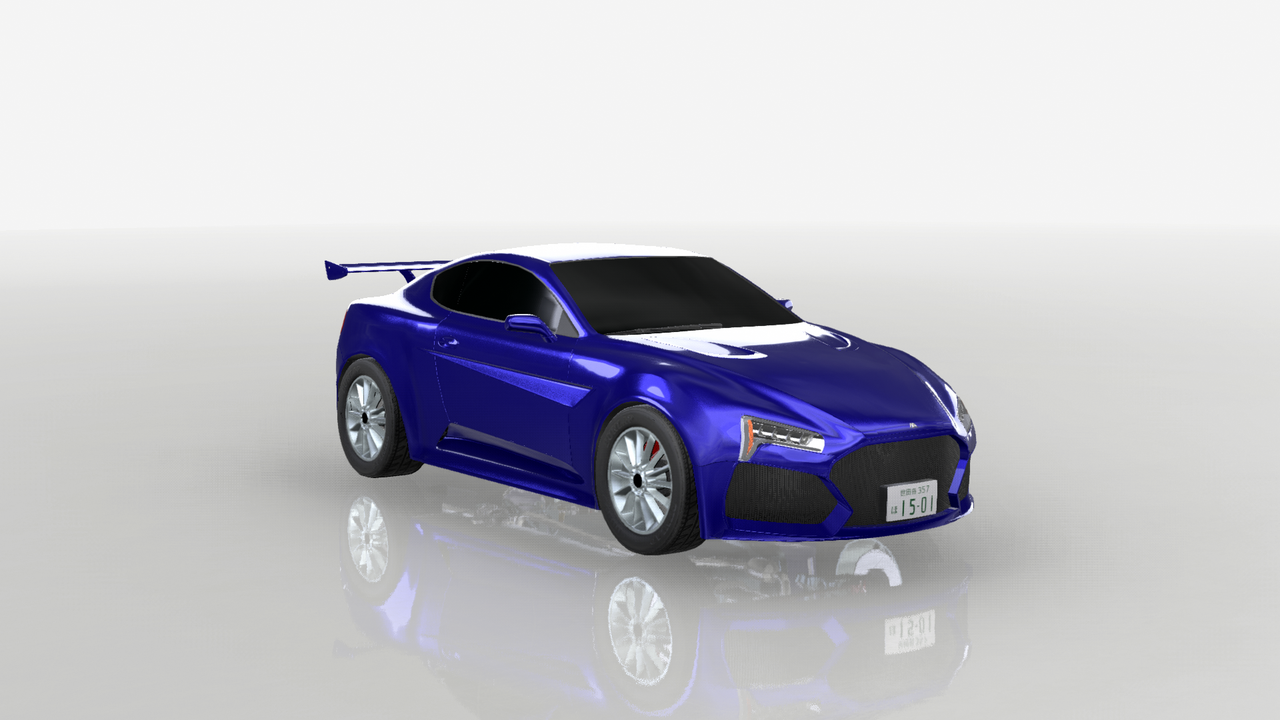

Layout FR
Engine Name MI1-4D
Aspiration TB
Displacement 1997 cc
Peak Power 239 kW (321 hp) @ 8300 RPM
Peak Torque 307 Nm (227 ft-lb) @ 6900 RPM
Weight 1145 kg (2524 lb)
Weight Distribution Front/Rear 56/44
STARTING PRICE
¥4,167,600 JDM
$39,050 USDM
COLOURS
Blazing Red Metallic
Ardour Red
Tangerine
Legacy Sunset Orange
Candy Burnt Orange
Biwa Blue Metallic
Legacy Coastal Blue
Ethereal White
Cloud Grey Metallic
Pewter Grey
Sumi Black
Why not offer a manual on the Aspect, to satisfy the enthusiasts even more? At any rate, it’s a formidable entry into the affordable sports car market.
It was indeed offered with a six-speed manual for both trim levels, in part due to the lower reliability of DCTs.
With production beginning in 2010, the new Mont Blanc became renowned for its wealth of interior space, benefiting from a high ceiling and more than plenty of legroom for its two rear seats. Cargo space was also abundant, given the two-box design carried over from the first Mont Blanc. Under the hood was a transversely-mounted 5.2-litre V12 providing smooth power to all four wheels via an electronically-controlled 7-speed automatic gearbox.
Despite having a 13-million-yen price tag and being almost a full metre longer than its predecessor, its spacious interior helped it once again set a standard—this time for Japanese luxury cars.
Mont Blanc
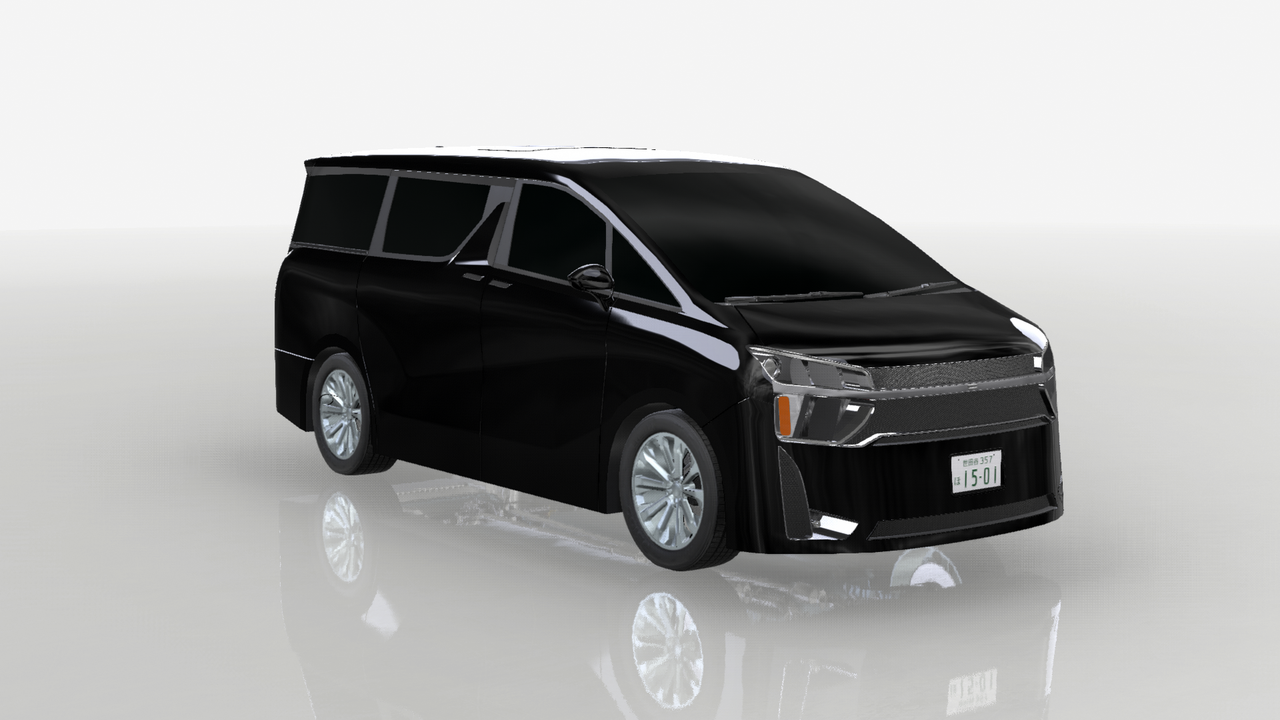
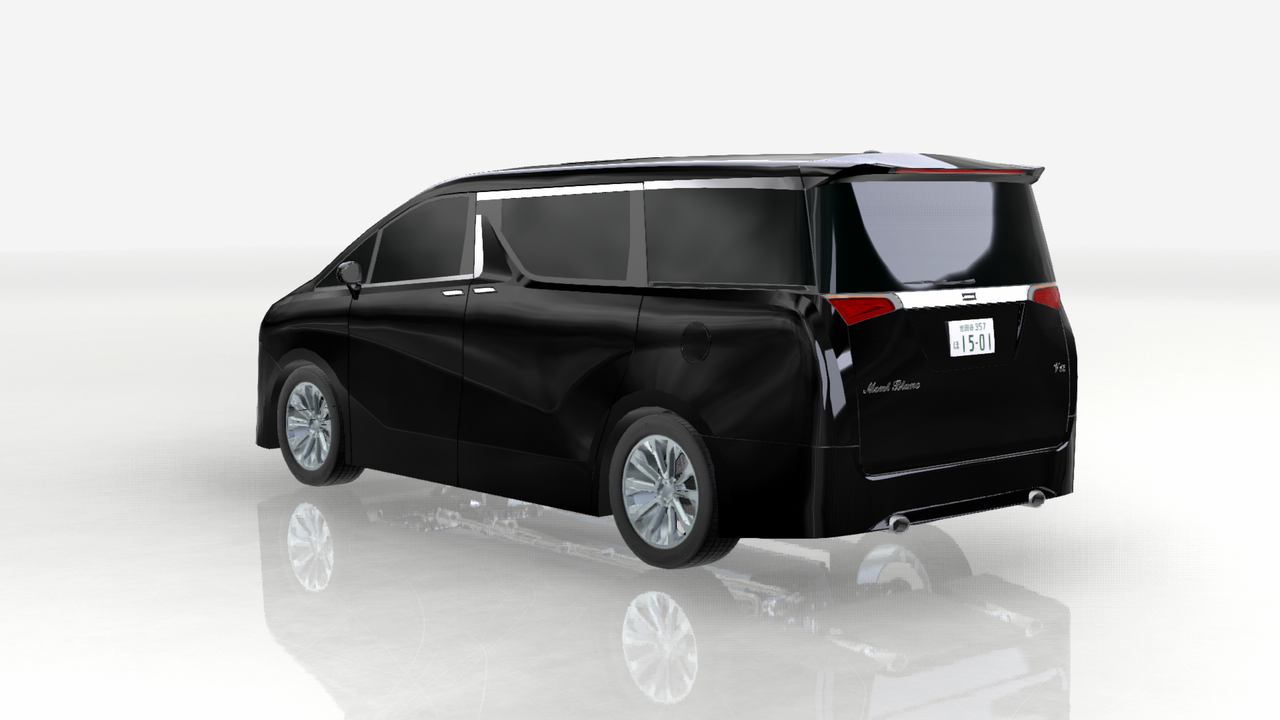
Layout F4
Engine Name MV2-12D
Aspiration NA
Displacement5194 cc
Peak Power 264 kW (354 hp) @ 5900 RPM
Peak Torque 461 Nm (340 ft-lb) @ 3900 RPM
Weight 1962 kg (4325 lb)
Weight Distribution Front/Rear 57/43
STARTING PRICE
¥13,100,000 JDM
$125,000 USDM
COLOURS
Deep Red
Space Blue Metallic
Titanium Bronze
Dusk Bronze
Brilliant White
Peak Grey Metallic
Piano Black
Many distinctive design features were inherited from the previous-generation car; these included the four round headlights (now housed within a sleek cluster alongside an L-shaped DRL strip and turn signal), as well as the bar across the trunk that bore the car’s name. A number of cutting-edge design elements were thrown into the mix, such as crescent-shaped LED taillights and retractable door handles. The engine, carried over from the Mont Blanc, was given a boost in power and now sat longitudinally, powering the rear wheels.
The new Matterhorn was developed with its sights set on similar European luxury offerings, and thus easily surpassed the standards set by its predecessor. While it wasn’t held in as high a regard as its competitors, Shimizu’s manufacturing mettle produced a well-built car that rewarded those who knew where to look.
Matterhorn
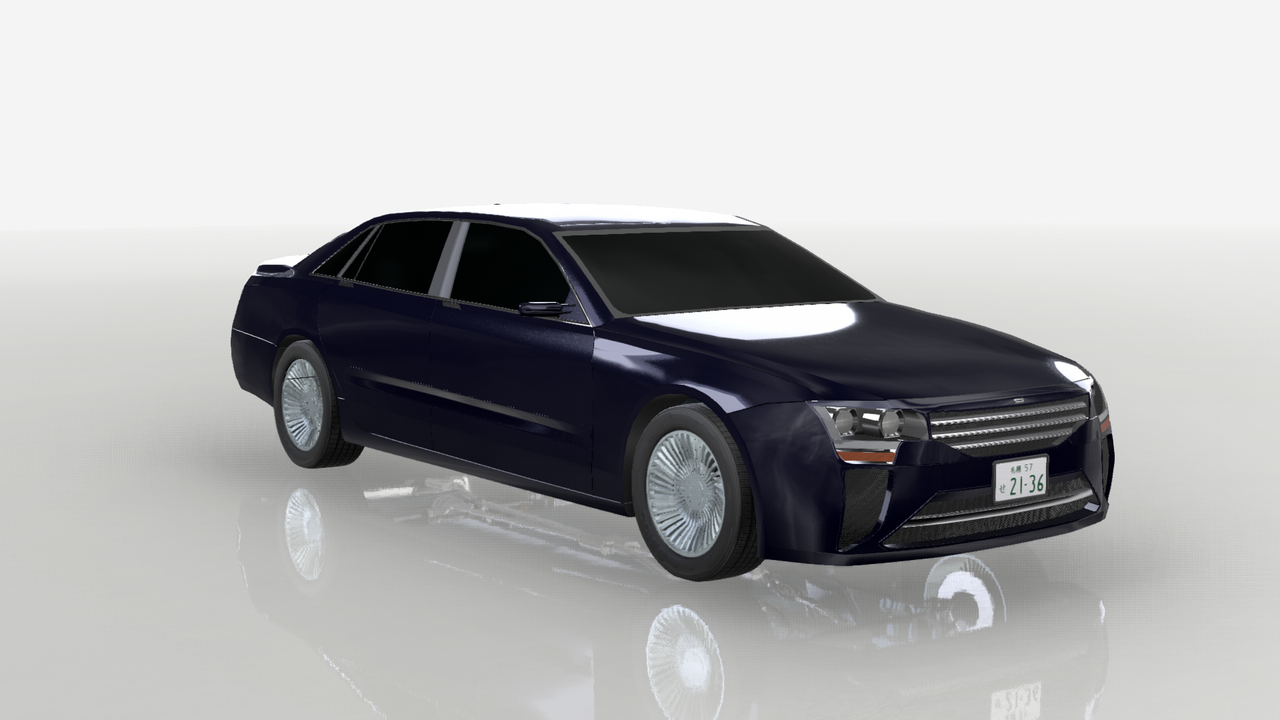
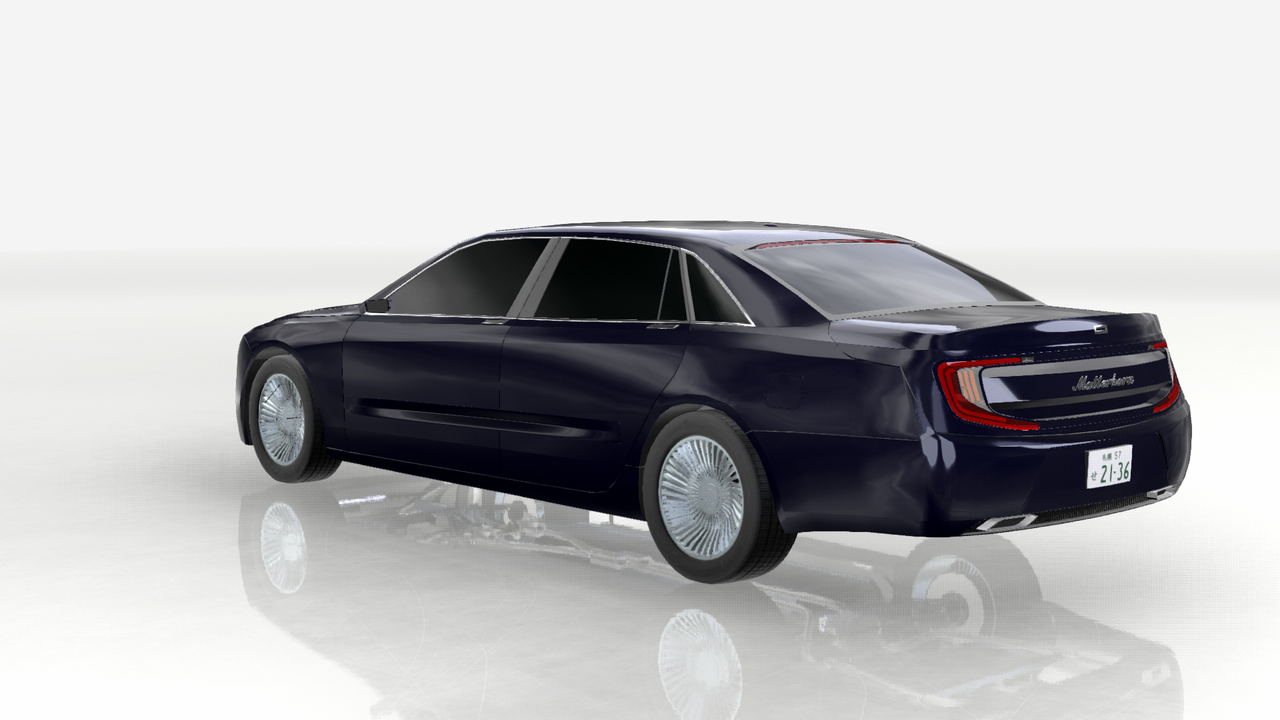
Layout FR
Engine Name MV2-12D
Aspiration NA
Displacement5194 cc
Peak Power 279 kW (354 hp) @ 6400 RPM
Peak Torque 490 Nm (361 ft-lb) @ 3900 RPM
Weight 2213 kg (4879 lb)
Weight Distribution Front/Rear 55/45
STARTING PRICE
¥21,150,000 JDM
$201,000 USDM
COLOURS
Deep Red
Deep Laver Metallic
Space Blue Metallic
Titanium Bronze
Dusk Bronze
Brilliant White
Peak Grey Metallic
Piano Black
I may not be a fan of the front, but omg rear end is fucking beatiful
I agree. The front is more than a little odd to me, but at least the rear is much better - and as its name suggests, it represents the peak of its manufacturer’s ambitions.
The Rinkai Magari (曲がり; curve) was a traditional front-engine, rear-drive roadster with a manually operated canvas top and few creature comforts besides the standard air conditioning, radio, and cassette player, with a CD player offered as optional equipment. Under the hood, the Magari used the same engine as the kei Tsuji: a turbocharged 660 cc inline-3 with a 4-valve SOHC valvetrain and variable valve timing. Weighing in at 69 kg (152 lb), the diminutive engine was one of multiple factors that kept the Magari’s weight at just 899 kg (1761 lb). With such a low weight and decent weight distribution to boot, it’s no wonder the two-seater was able to coast through corners with ease.
Magari
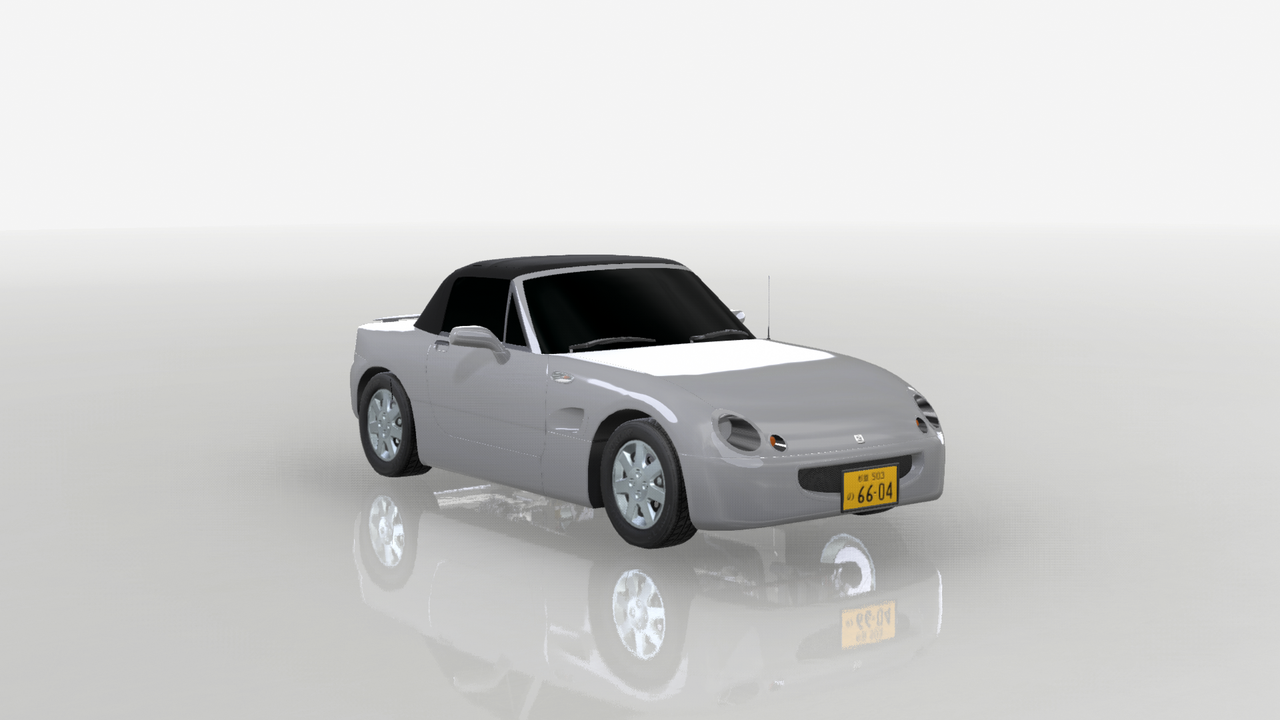
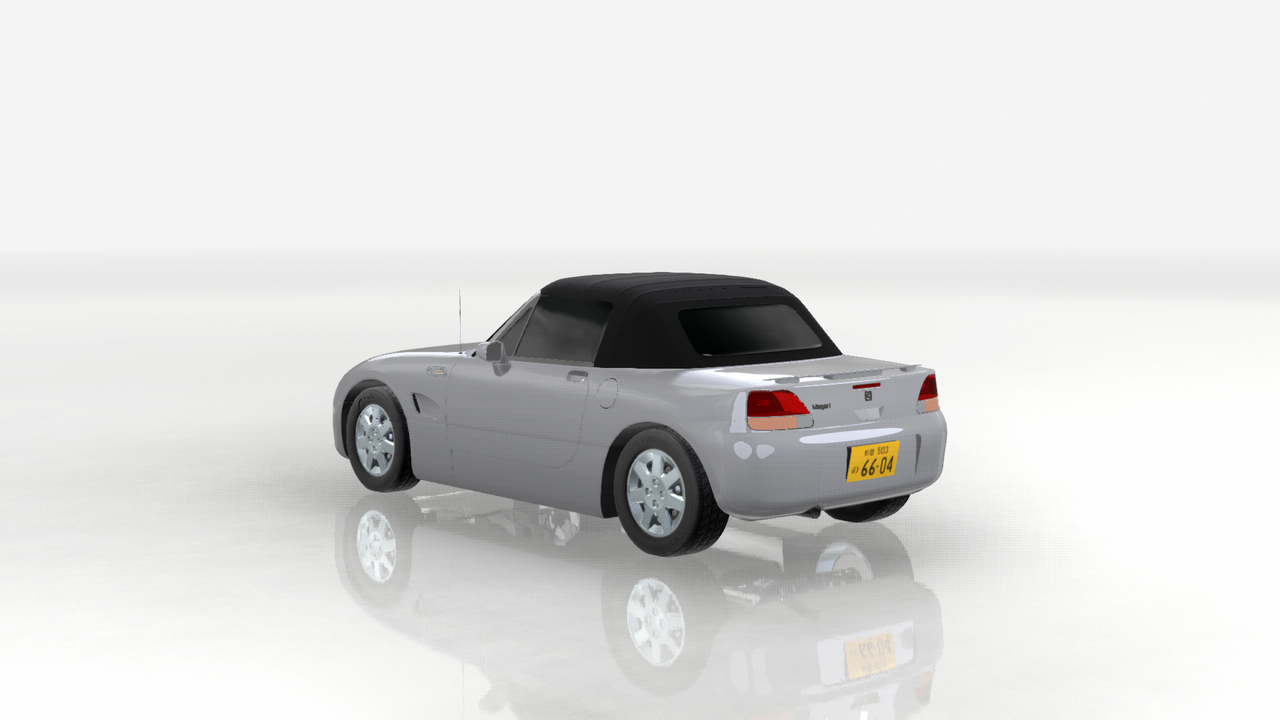
Layout FR
Engine Name RIK2-3S
Aspiration TB
Displacement 660 cc
Peak Power 47 kW (63 hp) @ 6400 RPM
Peak Torque 80 Nm (59 ft-lb) @ 4800 RPM
Weight 899 kg (1761 lb)
Weight Distribution Front/Rear 53/47
STARTING PRICE
¥470,000 JDM
COLOURS
Ardour Red
Tamago Yellow
Marsh Green
Sky Blue
Coastal Blue
Ash White
Snow Grey
Pewter Grey
Sumi Black
This is definitely one of the better-looking kei sports cars I’ve seen on these forums. True to its name, despite its meager power output, it relishes spirited driving through twisty roads, thanks to its tiny footprint and low kerb weight.